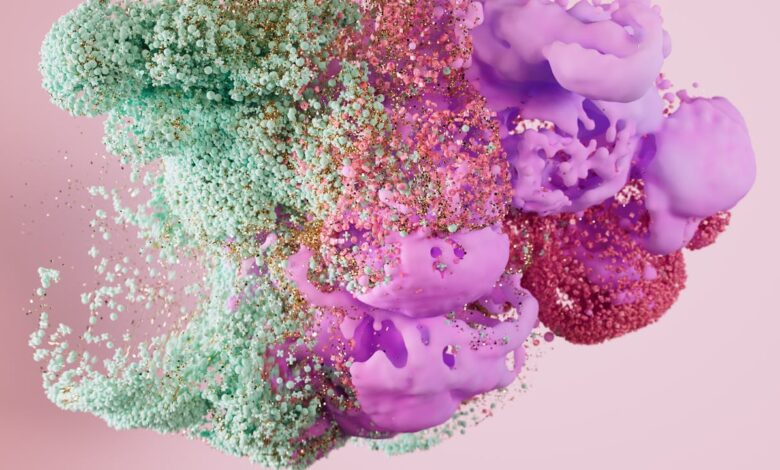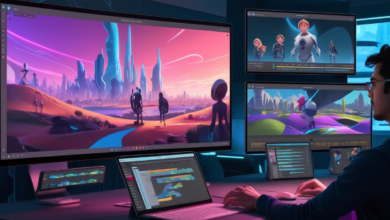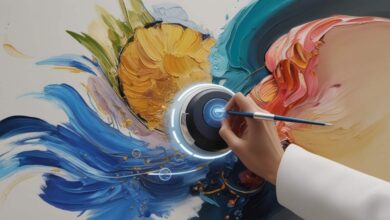
Artificial intelligence (AI) is revolutionizing how we create and interact with art. Imagine being able to generate a painting reminiscent of Monet or Renoir without ever picking up a brush. AI tools make this possible by using complex algorithms trained on Impressionist art to recreate the style’s signature features—soft brushstrokes, vibrant colors, and the magical interplay of light and shadow.
In this article, I’ll explain how AI generates art, the technology behind it, and how you can create your own Impressionist-style masterpieces. Let’s dive in.
What is AI Art?
AI art refers to artwork generated using artificial intelligence algorithms. These systems analyze existing artworks to learn patterns, techniques, and styles, then apply this knowledge to create new art.
How AI Works in Art Creation
AI uses machine learning to study a vast dataset of images. The process involves:
- Pattern Recognition: AI identifies features like brushstrokes, textures, and color schemes.
- Style Application: Algorithms like neural style transfer allow AI to apply an artistic style to an image.
- Generative Creation: AI can generate entirely new pieces by combining learned elements from multiple styles.
For example, an AI tool can take a photograph of a landscape and recreate it in the style of an Impressionist painting, complete with soft, layered strokes and a dreamy atmosphere.
How Does AI Generate Impressionist-Style Paintings?
Impressionist art captures fleeting moments, often focusing on light, movement, and vibrant scenes. AI mimics these qualities by learning from thousands of existing Impressionist works. Let’s break it down:
1. Training AI on Impressionist Data
AI systems are trained using datasets of Impressionist paintings. These datasets include works by artists like Claude Monet, Pierre-Auguste Renoir, and Edgar Degas.
2. Algorithms at Work
- Neural Style Transfer: This technique overlays the style of a chosen painting onto a new image. For example, you could transform a photo of a sunset into a Monet-like masterpiece.
- Generative Adversarial Networks (GANs): GANs involve two neural networks—one generates the art, and the other evaluates its quality. This back-and-forth process helps the AI refine its output to resemble true Impressionist works.
3. Capturing Artistic Elements
AI focuses on the following elements to mimic Impressionism:
- Brushstrokes: Short, quick strokes that create texture.
- Light and Shadow: The subtle interplay of highlights and shading.
- Color Palette: A mix of vibrant and pastel colors that evoke emotion.
Using AI to Create Your Own Impressionist Art
Creating art with AI is easier than you might think. Here’s a simple guide:
Step 1: Choose an AI Art Tool
Popular platforms for generating art include:
- DALL-E: Known for its wide range of creative options.
- DeepArt: Specializes in style transfer for various art styles.
- RunwayML: A versatile tool for artists and designers.
Step 2: Upload Your Image
Start with a photograph or blank canvas. Upload it to the AI tool.
Step 3: Select the Impressionist Style
Most platforms let you pick a painting style, such as Monet’s soft landscapes or Renoir’s lively portraits.
Step 4: Adjust Settings
Experiment with brushstroke intensity, color saturation, and other parameters to customize your artwork.
Step 5: Generate Your Masterpiece
Let the AI process the image. In seconds, you’ll have a stunning piece of art inspired by the Impressionist era.
The Technology Behind AI Art
AI art is powered by advanced algorithms. Here’s what makes it possible:
Neural Networks
Neural networks are the backbone of AI art. These systems mimic the way the human brain processes information. For art, neural networks analyze patterns in images and apply them to new creations.
Generative Adversarial Networks (GANs)
GANs are particularly powerful in art creation. They consist of two parts:
- The Generator: Creates new art based on learned data.
- The Discriminator: Evaluates the generated art and provides feedback.
This dynamic helps the AI improve over time, producing artwork that looks increasingly realistic.
Style Transfer
This technique allows AI to apply the characteristics of one image to another. For Impressionist-style paintings, the AI identifies key elements like brushwork and light patterns from a reference painting and replicates them.
Can AI Replace Human Artists?
This is a hot topic in the art world. While AI can replicate artistic styles, it lacks the emotional depth and personal experiences that human artists bring to their work.
The Role of AI in Art
- AI as a Tool: AI helps artists experiment with new styles and techniques.
- Collaborative Creativity: Many artists use AI as a collaborator, combining its capabilities with their own vision.
The Creative Process: How AI Mimics Human Creativity
When creating art, human creativity often feels unique and spontaneous. While AI doesn’t replicate this exact process, it can simulate creativity by following a structured yet innovative approach.
AI’s Role in the Creative Process
- Learning from Data: AI systems study thousands of images to understand artistic techniques.
- Recreating Patterns: Algorithms mimic brushstrokes, color combinations, and compositions found in Impressionist art.
- Generating Variations: AI can experiment with different parameters to create variations of an artwork, much like how an artist explores new ideas.
Experimenting with AI
The beauty of AI art lies in its flexibility. You can:
- Generate Multiple Styles: Experiment with different Impressionist influences, such as Monet’s landscapes or Degas’ ballerinas.
- Combine Techniques: Merge Impressionist styles with modern elements to create hybrid art.
- Explore New Frontiers: Push the boundaries of art by combining AI’s generative capabilities with your own creative vision.
How AI Tools Are Trained to Generate Art
AI art generators don’t start off knowing how to paint like an Impressionist. They undergo extensive training to develop their abilities.
The Training Process
- Dataset Collection: Developers compile datasets of Impressionist paintings, such as works by Monet, Renoir, and Pissarro.
- Image Labeling: The paintings are categorized by style, brushstroke techniques, and color palettes.
- Algorithm Training: Using machine learning techniques, the AI analyzes these datasets to learn patterns and features.
- Testing and Refining: Developers test the AI by generating art and refining the algorithms based on the output.
Key Algorithms in Training
- Neural Networks: Recognize and replicate patterns in art.
- Generative Adversarial Networks (GANs): Improve the quality of generated art through iterative feedback.
- Deep Learning Models: Process complex patterns in large datasets.
Exploring Different AI Art Styles
While Impressionism is a popular choice, AI can generate art in various styles. Let’s look at some examples:
1. Abstract Art
AI experiments with shapes, colors, and patterns to create abstract pieces that are visually striking.
2. Pop Art
Using vibrant colors and bold designs, AI captures the essence of the Pop Art movement.
3. Realism
AI tools like DALL-E and DeepArt can produce hyper-realistic images, making it hard to distinguish between AI-generated and human-created art.
4. Hybrid Styles
One of the most exciting applications of AI is blending multiple styles to create something entirely unique. Imagine combining the dreamlike quality of Impressionism with the boldness of Pop Art.
FAQs About AI and Art Creation
Let’s address some common questions about AI-generated art:
1. What Is the Most Powerful AI Art Generator?
Currently, tools like MidJourney, DALL-E, and Stable Diffusion are leading the way in generating high-quality art.
2. Can I Generate Art That Looks Like Monet’s Work?
Yes! AI tools allow you to upload an image and apply a Monet-style filter, creating a masterpiece in seconds.
3. Is AI Art Original?
AI art is unique but not entirely original since it draws inspiration from existing artworks. However, its ability to combine elements from different styles often results in fresh and exciting creations.
4. How Are AI Art Generators Trained?
AI art generators are trained using datasets of existing artworks. These datasets teach the AI to recognize patterns, textures, and color schemes.
The Impact of AI on the Art World
The rise of AI-generated art has sparked debates among artists, collectors, and enthusiasts. Let’s explore its impact:
1. Accessibility
AI makes art creation accessible to everyone, regardless of skill level. All you need is a computer and an internet connection to get started.
2. Collaboration
Many artists use AI as a collaborator, integrating its outputs into their creative process.
3. Challenges
Critics argue that AI art lacks the emotional depth of human-created art. Additionally, issues of copyright and originality remain unresolved.
Ethical Considerations in AI Art
As with any new technology, AI art raises important ethical questions:
1. Ownership
Who owns an AI-generated piece of art? Is it the person who used the tool, the developer of the algorithm, or the source of the dataset?
2. Copyright
AI tools often rely on datasets of existing works. This raises questions about whether the original artists should be credited or compensated.
3. Impact on Artists
Some fear that AI could devalue the work of human artists by flooding the market with inexpensive, mass-produced art.
AI’s Potential to Create New Art Movements
Throughout history, art movements have been defined by their innovation and experimentation. AI has the potential to spark entirely new movements by:
- Combining styles in unprecedented ways.
- Generating art forms that were previously unimaginable.
- Challenging traditional notions of creativity and authorship.
How to Experiment with AI Art
If you’re interested in exploring AI-generated art, here are some tips:
- Start Small: Use free tools like DeepArt or RunwayML to get a feel for the process.
- Experiment with Styles: Try generating art in different styles to see what resonates with you.
- Combine Mediums: Use AI-generated art as a base and add your own touches, like painting over a printout.
Conclusion: Embrace the Magic of AI in Art
AI has transformed the art world, making it easier than ever to experiment with styles like Impressionism. Whether you’re a seasoned artist or a beginner, AI offers endless possibilities to unleash your creativity. By understanding the technology behind AI art and using it responsibly, you can create stunning masterpieces that bridge the gap between human creativity and machine intelligence.



